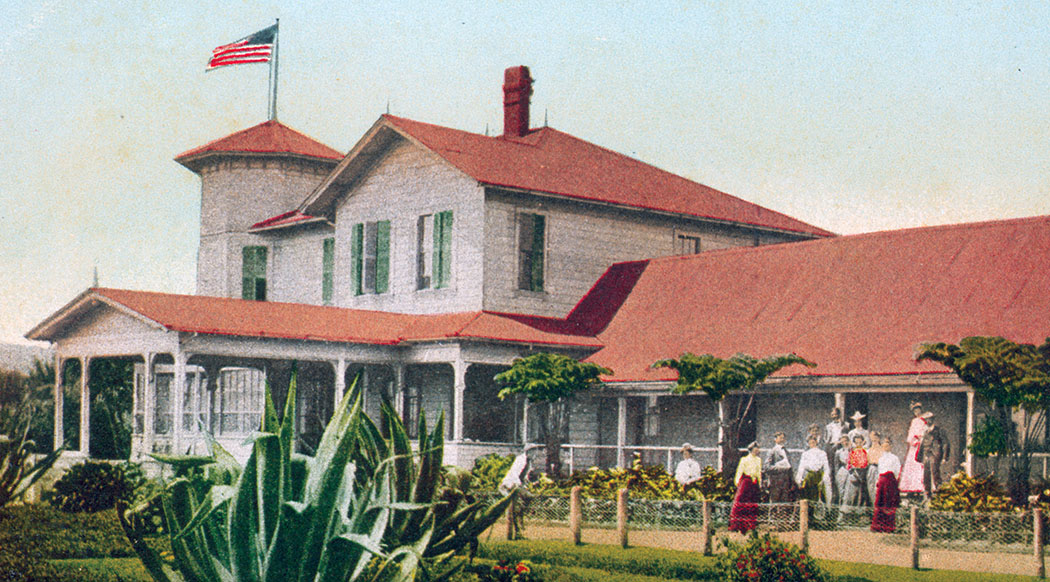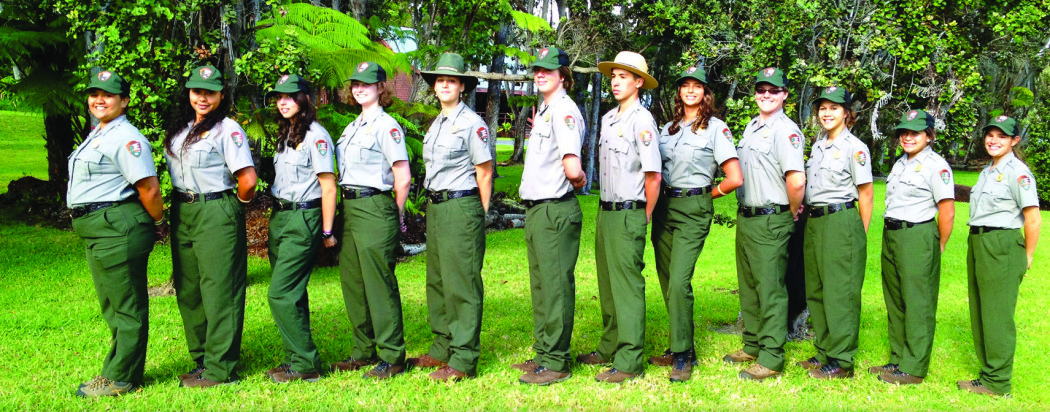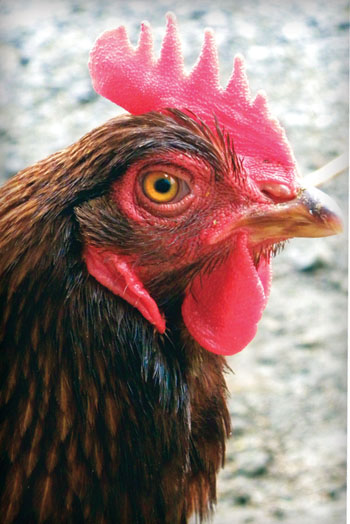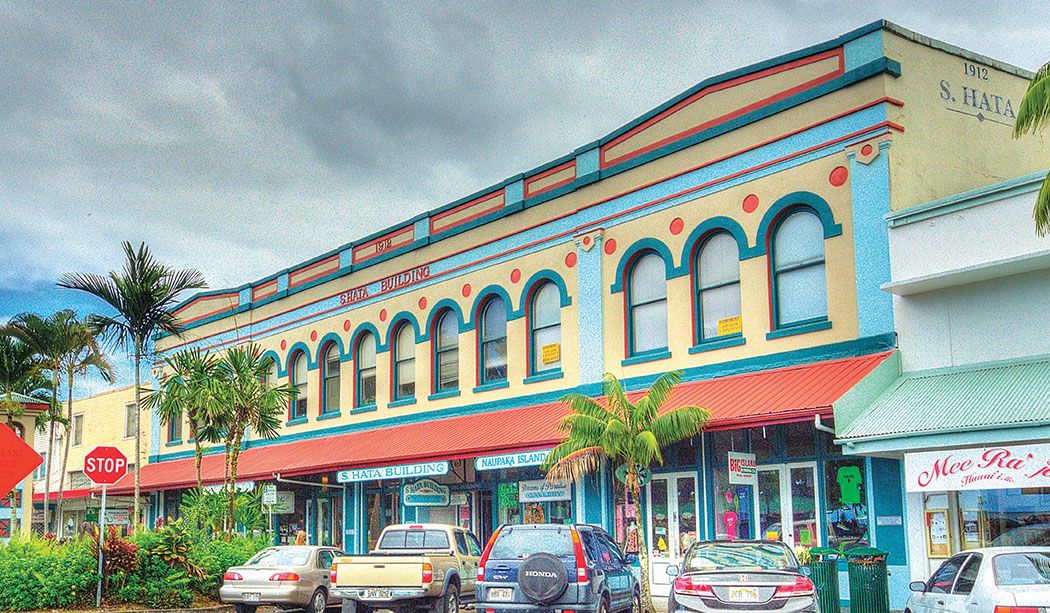
Boone Morrison: Hawai‘i Island’s Leading Restoration Architect

By Alan D. McNarie
When I was about 11, my folks were touring the gold rush country,” reminisces Boone Morrison, sitting in the architect’s studio behind his house in Volcano.
“We showed up in Sacramento and they were restoring Sutter’s Fort. They were making adobe and hewing timbers, and there was a blacksmith doing ironwork.”

Boone never lost the fascination he felt that day. A few years later, when he was a junior at Stanford, he answered an ad for a summer job with the California State Park Service doing restoration work. He got the job. It turned out to be at an old Russian trading fort in northern California; the man in charge of the project was one of the craftsmen he’d watched at Sutter’s Fort.
That was about half a century ago. Now in his 70s and not slowing down, Boone is the island’s leading restoration architect. In addition to designing 110 modern buildings, he’s done at least 35 restorations of historic structures. He’s helped return many of Downtown Hilo’s treasures—Haili Church, the S. Hata Building, the Volcano Block Building, the Palace Theater, the Hilo Masonic Temple—to their former glory.
When Hurricane Iniki devastated Kauai in 1992, Boone was called over to lead efforts to rescue several historic buildings. He’s since restored more than a dozen landmark buildings there.
It’s all part of a larger fascination with history. Boone’s workshop holds working examples of black powder rifles similar to those carried by his ancestor, Daniel Boone. On the lawn outside is the rusted undercarriage of an antique railroad car on a section of rail. (When Kilohana Plantation on Kauai built an old-fashioned plantation railroad for tourists, Boone became the project’s architect.) He’s participated in historic reenactments on the mainland and published articles in history journals.
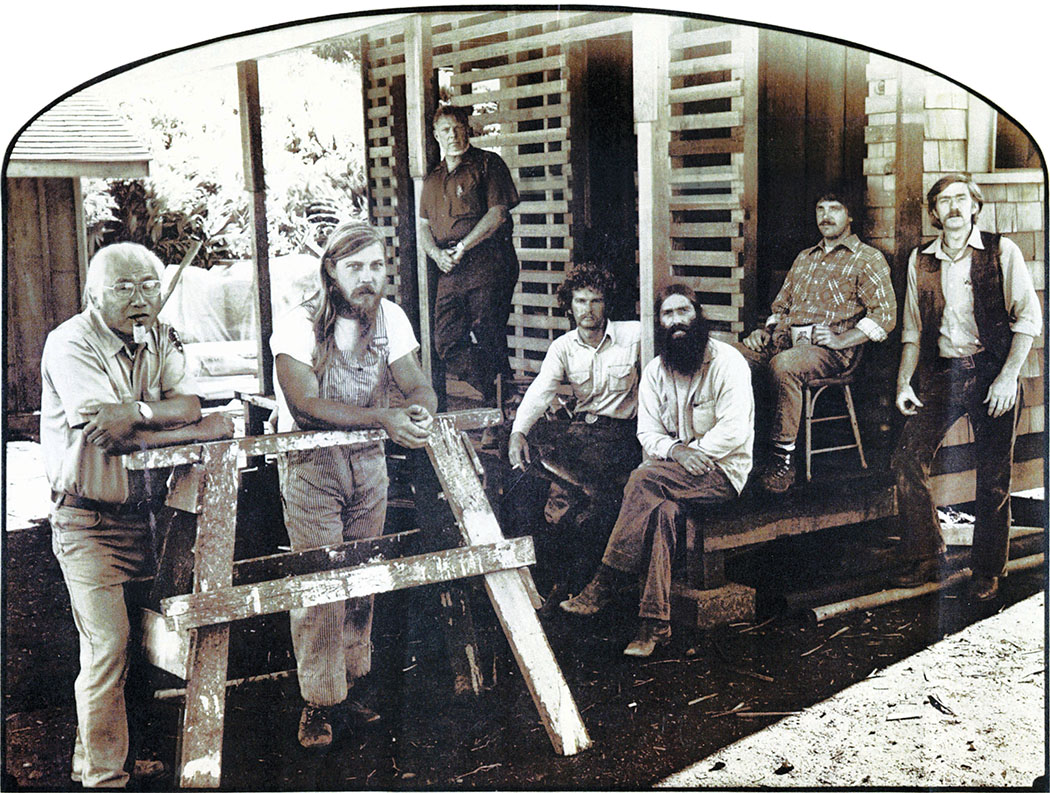
One of Boone’s first restoration projects in Hawai‘i was the Volcano Art Center Gallery in Hawai‘i Volcanoes National Park, originally the 1877 version of Volcano House, the park’s iconic hotel. In the early 1970s, Boone was exploring the park and noticed the rustic old building, which had been moved from its original site to make way for later versions of the hotel.
“It was full of junk and smelled of rat urine—old clothes piled around and broken furniture—but the quality of the spaces really impressed me,” he recalls.
The park service was planning to burn the building for a fire fighting drill. Boone thought the rustic old hotel could be restored and repurposed as an art gallery.
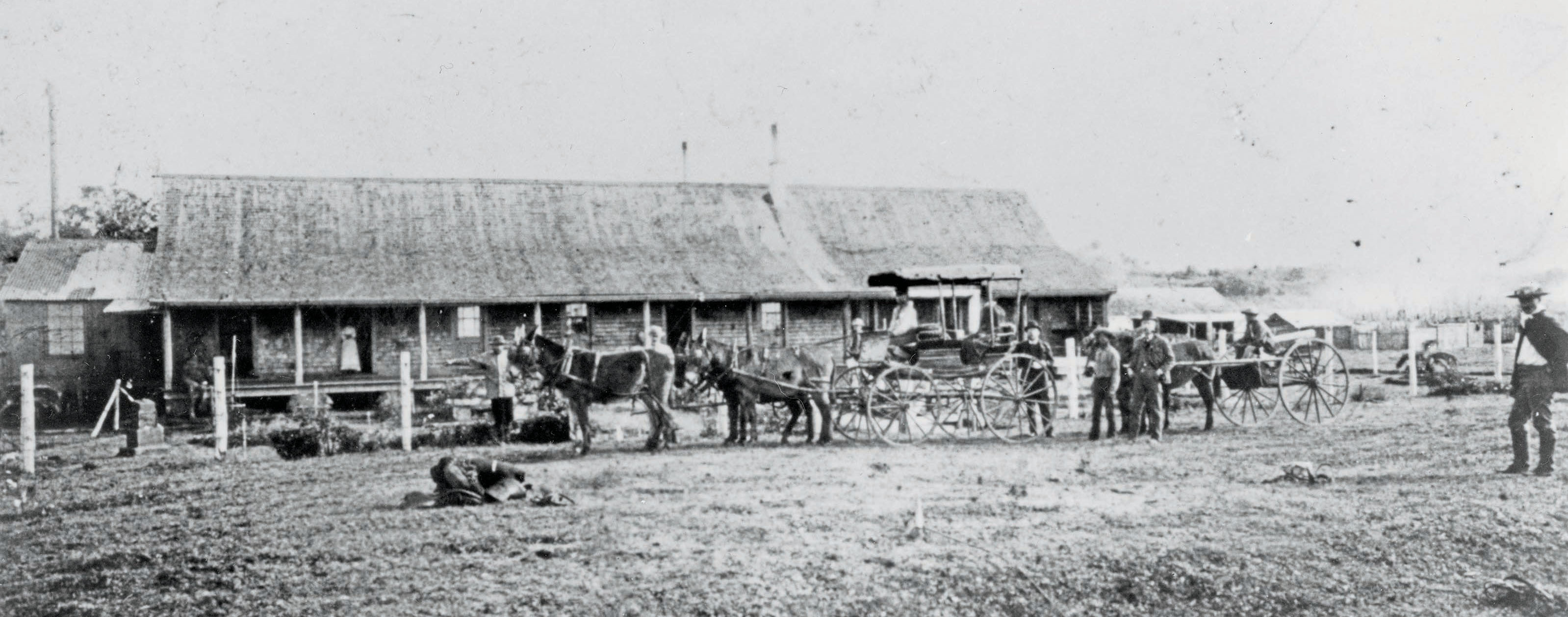
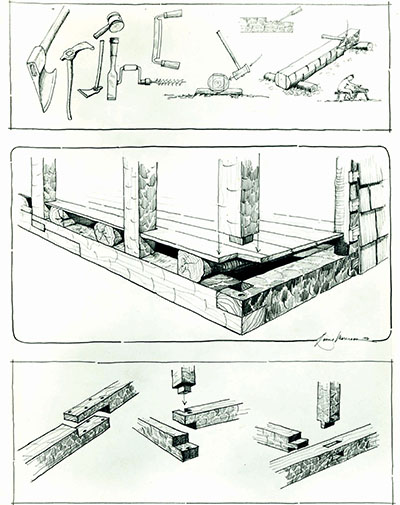
“In early 1973, I approached the park service. Brian Harry, who was head of the park at the time and was a very accomplished wildlife artist on his own, was very receptive to the idea. At the same time I met [the late] Russ Apple, who was Pacific Region Historian at the time, and he was very enthusiastic about the idea. Together we put together the paperwork to put it on the National Registry [of Historic Buildings].”
Restoring the old hotel was no easy task. About 20 percent of the building was in disrepair—floors were collapsing and timbers were rotted—and yet it was still a major historical asset.
“Here we had the oldest visitor accommodation standing in Hawai‘i and the first wood frame building on Kīlauea,” notes Boone. “The hewn-timber frame, using locally sourced woods, is totally unique.”
The hotel’s carefully preserved guest books showed that the 1877 version had played host to such historic personages as Queen Lili‘uokalani. That meant that the building met all three criteria required for listing in the National Historic Registry: it was of historical note, it was associated with important people, and it was architecturally significant.
Boone not only served as the architect for the restoration project; he headed up the carpentry crew. Early on, he and Russ decided to carry out the entire project using nineteenth-century tools and techniques.
“That meant felling trees in the forest, bringing the raw logs into the site, hewing the logs with ax and adze. My experience with hewing redwood logs in California did not prepare me for the same task with ‘ōhi‘a, which is so much harder,” he recalls. “You have about three to four days to hew an ‘ōhi‘a log, or it will get so hard that you can’t work on it. An ax will bounce.”

The sight of workers using axes, handsaws, chisels, and brace-and-bits (a type of hand drill) turned the work site into educational tourist attraction. The park had to erect barricades for crowd control and assign rangers to explain what the crew was doing.
“Without any prompting the guys began to wear their interpretation of historic period costumes,” remembers Boone. The restoration had evolved into a reenactment.
When a government inspector had looked over the restoration, he told Boone, “The problem is your work is identical to the original. In the future, people could mistake all your work for original work.”
Boone had to crawl under the building again and stamp the date of construction into every timber that he and his crew had replaced.
The Volcano House project illustrates a number of the interwoven challenges involved in any historic building restoration: recognition, research, reconstruction, and repurposing.
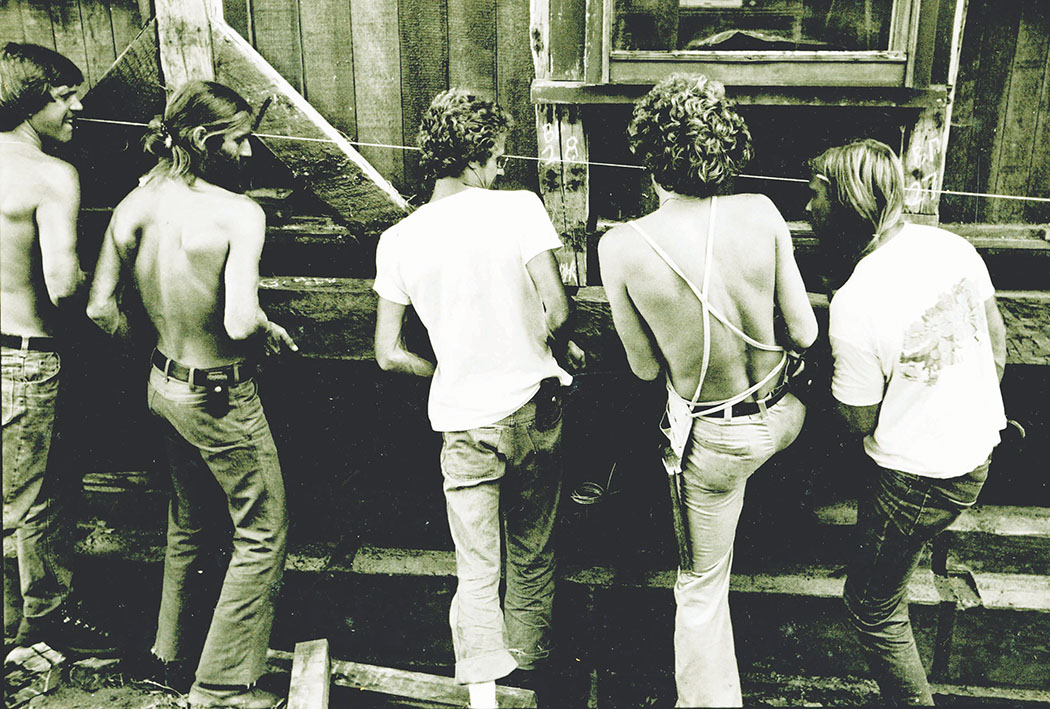
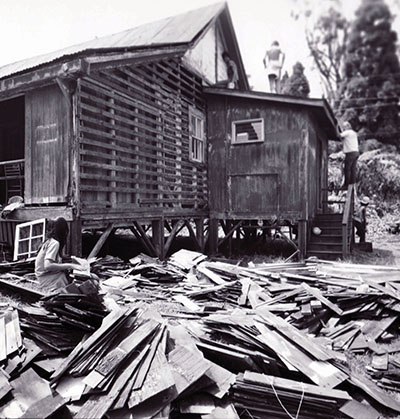 First, the building has to be recognized as a valuable asset—and that often involves research: How old is it? What is its story? What’s its significance to the community? Boone’s research had to develop a near-encyclopedic body of knowledge about the 1800s and 1900s: everything from nineteenth-century newspapers to steamship routes.
First, the building has to be recognized as a valuable asset—and that often involves research: How old is it? What is its story? What’s its significance to the community? Boone’s research had to develop a near-encyclopedic body of knowledge about the 1800s and 1900s: everything from nineteenth-century newspapers to steamship routes.
“From 1873 into the 1890s, Port Blakely Washington was the single largest shipping origin for Doug[las] fir,” he rattles off, for instance. That tidbit may explain why the old Volcano House was framed in hand-hewn ‘ōhi‘a, but clad in milled mainland lumber: “Informed conjecture says, your lumber from Port Blakely is months away.”
Boone reasons: By using local materials, the builders could have the frame up by the time the rest of the lumber arrived: “They could do what is currently called fast-tracking.”
Sometimes, instead of old books and photos, the restorer needs to read the building itself, or even fragments of the building. The style of a structural post may betray the location of a once-open porch that was later enclosed; a discontinuity in the flooring may suggest that a bedroom or kitchen was added later. Boone calls that sort of research “forensic architecture.” It can be especially important in the wake of a natural disaster.
Among the buildings that Boone was tasked with restoring after Hurricane Iniki was Kilohana, the 1935 Gaylord Wilcox estate near Puhi. The chimney had ended up in the kitchen of the huge 1935 mansion, and much of the steep Tudor-style roof was gone. One of the first jobs was the stretching of tarps to protect the interior by workers using rappelling gear. The main mansion was still a fairly “straightforward” job, according to Boone; they even had the original architectural drawings to use. A bigger challenge was the estate’s 1910 visitor’s cottage, which had “literally been blown to smithereens.”
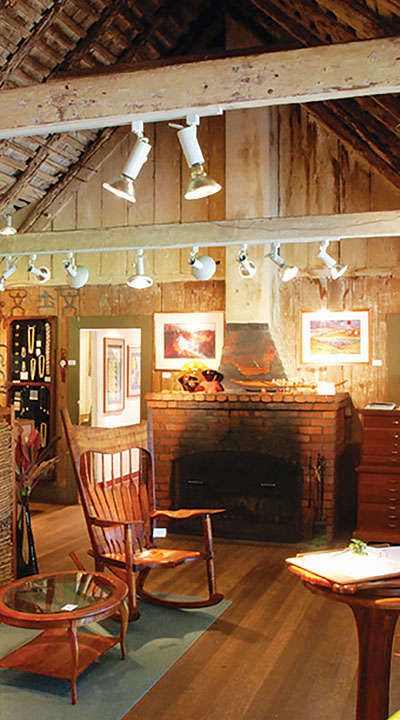
“All I had to work with was the floor, some fuzzy photographs, and the debris that was blown across the cane field. That was truly forensic architecture,” Boone recalls. The woodwork of the cottage had to be completely recreated by examining the designs in fragments of debris.
Another challenge of restoration is repurposing, or “adaptive re-use.” Often, an old building’s salvation may depend on finding a new use for it. Kilohana now holds shops and a restaurant. In the 1877 Volcano House, former bedrooms now display pottery, sculptures and paintings. Historic houses in rezoned neighborhoods may find new life as doctors’ offices. Even a retail space may need to be adapted for a different kind of retailing.
One of the buildings of which Boone is particularly proud, for instance, is the S. Hata Building on Hilo’s Bayfront, “the first substantial business building [in Hilo] built by a Japanese commercial interest,” notes Boone.
When Hata Dry Goods opened in 1914, a shopping trip to Hilo meant an overnight excursion on the island’s now-defunct railroad system. Instead of traveling to Hilo themselves, notes Boone, families would pool together and employ buyers to take their orders to town, fill them and bring their goods back. So Sadanosuke Hata’s new store had upstairs bedrooms for those buyers.
The building’s sturdy reinforced concrete walls survived Hilo’s two tsunamis. And yet, by the time new owner David Levinson contacted Boone in the early 90s, the building was in such bad shape that county officials wanted it torn down.
One of the first things Boone’s engineer, Afaq Sawar, had to do was “encircle the building with steel strapping to keep parapets from dropping pieces into the street.” An open alleyway had originally split the dry goods complex. Boone’s team roofed the alleyway to create a shopping arcade incorporating some of the building’s original design elements. The popular Café Pesto moved into the former dry goods space as the building’s anchor, and art galleries, boutiques, and a small museum found homes along the arcade. The buyers’ bedrooms upstairs became office space.
David Levinson, Boone notes, purchased the building for under $200,000 and put a little more than $700,000 into the restoration. “Less than five years later, he sold it for $2.1 million. And he received 25 percent federal tax credit on his business income through the Federal Rehabilitation Tax Credit Program.”
It isn’t just mansions and commercial buildings that are worth restoration.
“The whole theory behind restoration and its validity is that aside from obviously historically important buildings, the more commonplace buildings are just as important a part of the historic fabric,” maintains Boone.
Another restoration project that he takes special pride in is an old vacation cottage that was purchased in Volcano in 1907 by an immigrant Italian engineer named Guido Giacometti. The cottage is probably considerably older than that, and some of its parts may be older still; its windows, for instance were recycled from vertical-sash window frames typical of late nineteenth century houses, but the windows were turned on their sides so they slid horizontally—a common feature, Boone says, of early cottages in Volcano. It’s not a fancy building—instead of porcelain, the sinks are lined with zinc, for example—and it evokes the time and the place very well. Lovingly kept by the Giacometti family through the decades, it’s now a vacation rental offering visitors a unique taste of Old Volcano.
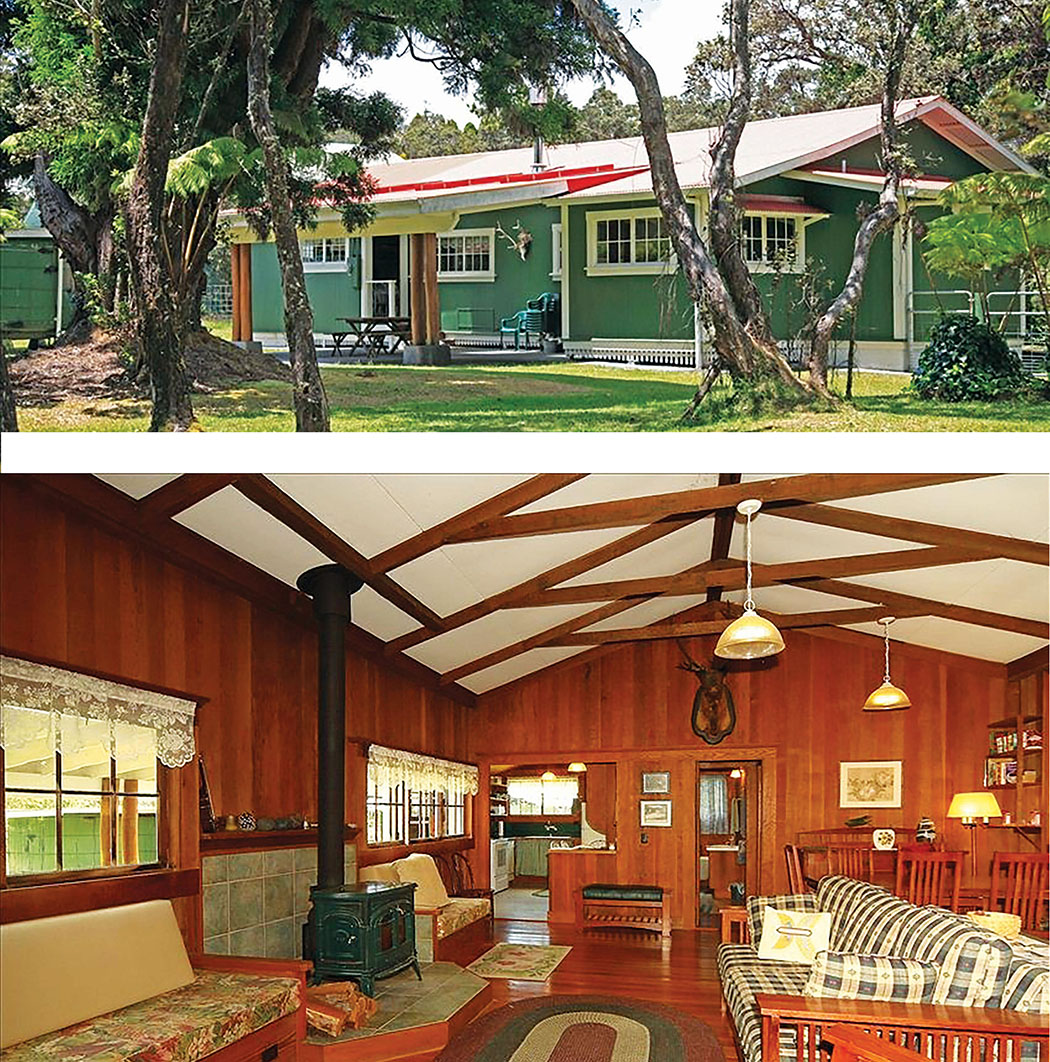
Boone is Vice Chair of the County of Hawai‘i Cultural Resources Commission, which reviews building modification plans for significant structures that are older than 50 years—the legal definition of an historic building.
“We’re interested in intercepting historic buildings of importance to ensure that their restoration does not damage the historic asset,” he says. “If we lose that, we lose who we are and where we came from.” ❖
Contact Boone Morrison: BooneMorrison.com
Contact writer Alan D. McNarie: amcnarie@yahoo.com
Contact photographer Kornelius Schorle: korneliusschorle@gmail.com
